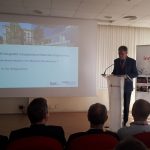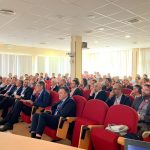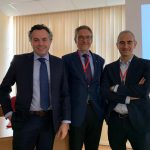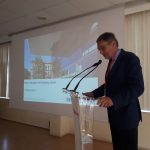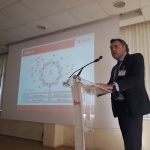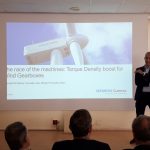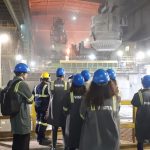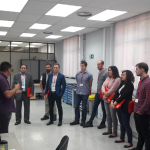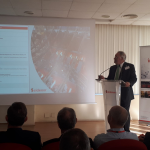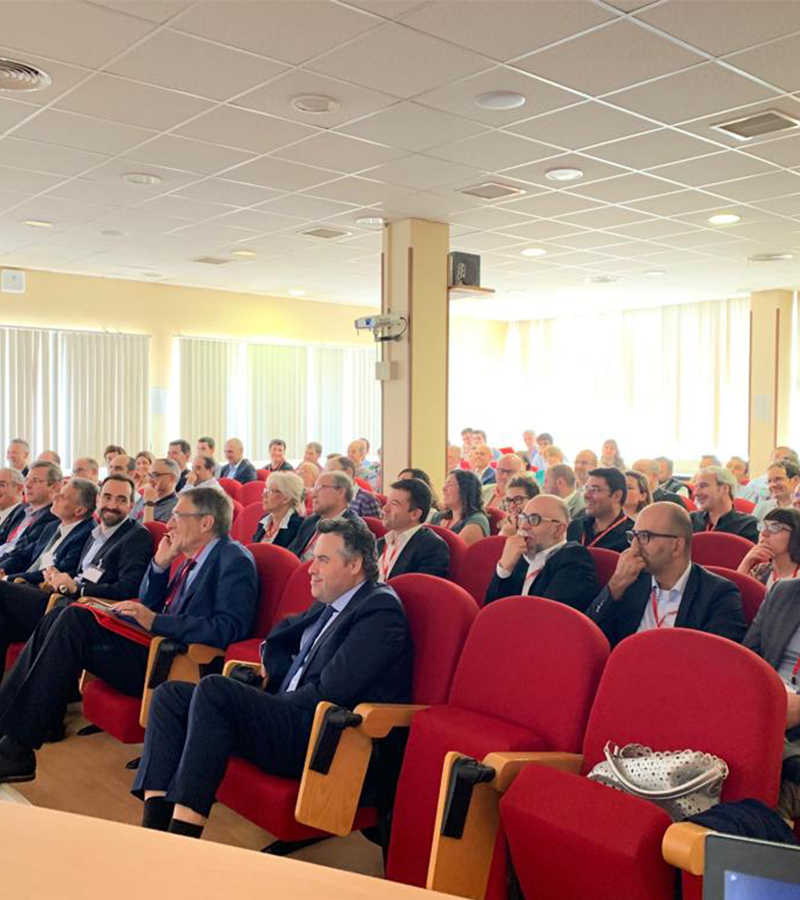
Innovation is one of Sidenor’s best allies, as well as one of the strategic axes of our activity. It has turned us into a group of reference in the steel sector.
Innovation drives our continuous improvement and has led us not only to become pioneers in our products and services, but also to increase our efficiency, competitiveness, safety and environmental friendliness.
For this reason, this year, we have wanted to open our doors and invite various customers and partner entities to share our vision and that of other experts regarding further development opportunities for the steel business in the area of innovation.
SIDENOR, in its first Innovation Day, has sought the support of renowned external observers in order to visualize the trends, opportunities and obstacles which are expecting special steel in the future. Fifty customers took part in technical conferences and had the opportunity to visit the new investments in the steel mill and rolling mill production installations of Basauri as well as the research teams of SIDENOR R&D.
After José Antonio Jainaga, CEO of SIDENOR, welcomed all those present, the technical discussion started on the progressive implementation of Industry 4.0 in SIDENOR. Íñigo Legua (CIO) specified the four pillars of SIDENOR 4.0 project: Smart Factory, Smart Business, technological Innovation and Cybersecurity. The project on Product Traceability, which enables the identification of each bar from the melting process to its delivery to the customer and relies on the contribution of small companies and start-ups through the BIND4.0 and BIZKAIA OPEN FUTURE programmes, deserves a special mention.
Following this presentation, Professor Bleck, from the prestigious Steel Institute of the University of Aachen in Germany (IEHK – RWTH Aachen), held two presentations on the application of 4.0 tools in the design of new steels and on the outcomes reached in the developments of new forging qualities. In an enjoyable lecture, he described how simulation tools, which usually encounter problems at macroscopic as well as microscopic level, can be integrated into one system which overcomes the weaknesses of each individual analysis. Concepts such as the ICME (Integrated Computational Materials Engineering), IoP (Internet of Production) or Digital Shadows enable the processing of millions of data for real-time product and process optimization. Digitalization offers enormous possibilities but, in exchange, requires a change in mentalities, procedures and attitudes.
If we limit steel innovation to the forging sector, three main trends can be detected: weight reduction, cost reduction and the substitution of strategically critical raw materials. Among successful cases, micro-alloyed steels, whose use has helped to avoid heat treatments which increase process costs and consume huge quantities of energy, are the paradigm. Despite their undeniable advantages, micro-alloyed steels also require a wide technological expertise, given the difficulty of controlling all process variables which affect the properties of the end product. Other highly promising developments are ductile bainitic steels (HDB), intermetallic precipitation steels with “damage tolerance”, hardening and tempering steels and MMS self-hardening steels (Medium Manganese Steels). These concepts, with their pros and cons, will impact the future of special steel in some applications.
The technical session ended with the intervention of a new speaker, Alfredo Fernández-Sisón, an engineer in the gearboxes unit of SIEMENS GAMESA, who introduced the challenges faced by the industry of wind turbines manufacturing at the time of increasing specific power (torque per unit mass) and ensuring the reliability of on-shore as well as off-shore wind turbines. In a very graphical manner, he showed the power evolution of wind turbines in the previous years, from 2 MW to >6 MW in a decade, which led to a higher strain on the tower and its weight, with a torque density increasing from 120 Nm/kg to 170 Nm/kg without any variation in materials or manufacturing technologies. The compromise between caution and risk is reaching its limits and we need to take the path towards innovation in new materials which ensure product reliability within a time horizon of between ten to twenty years.
The following lunch was preceded by a visit to the R&D laboratory, where the development capacities of SIDENOR’s new steels were explained, and followed by a tour through the production facilities of SIDENOR in Basauri, where the visitors could see the latest investments in the 240 mm billet continuous casting, the Ø410 mm round bloom and the continuous rolling mill, as well as the works in the new billet storage area.
A day completely dedicated to innovation in special steels – it was the first, but should not be the last, given the good vibes that were transmitted and the positive reaction of all those present. The first step along a road that SIDENOR intends to follow hand in hand with its customers and its employees.


